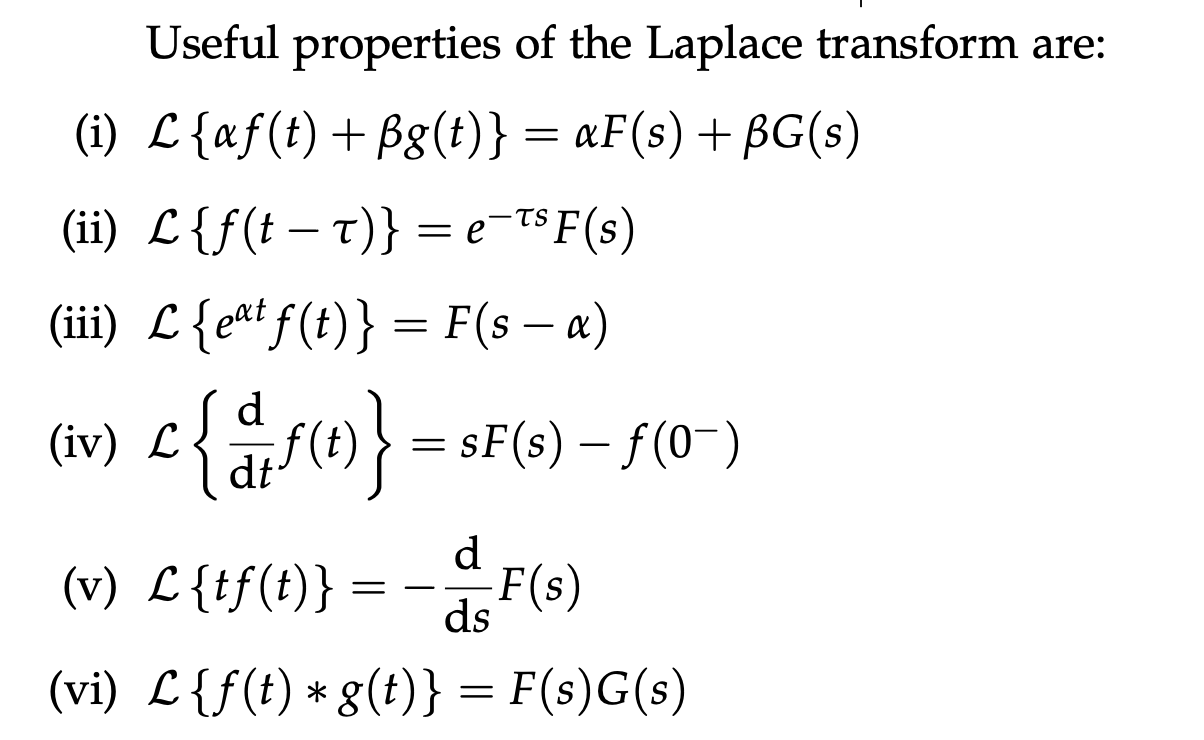Laplace Transform
Given a function , the Laplace Transform of denoted by (given that the integral exists) is defined by
- Here is a complex parameter called the “frequency”.
Why is
scalled the frequency?In , the term ω relates to angular frequency in radians per second.
Prof gave these two examples:
![[Screen Shot 2024-01-22 at 11.51.30 AM.png|]]
Properties of Laplace Transform
Theorem 1
For any function , the one-sided Laplace transform will always converge given that there is some sufficiently large such that exists
Theorem 2: Laplace Transform is Linear
Suppose that and have Laplace transform and .
Then for all {} the ROC is the intersection of the ROCs for and .
Theorem 3: Time-Scaling
If {} then for {}
Theorem 4: Exponential Modulation
Theorem 5: Time-Shifting
If and then
Theorem 6: Multiplication by
tIf then .
Theorem 7: Laplace Transform of a Derivative / Integral
Let be such
